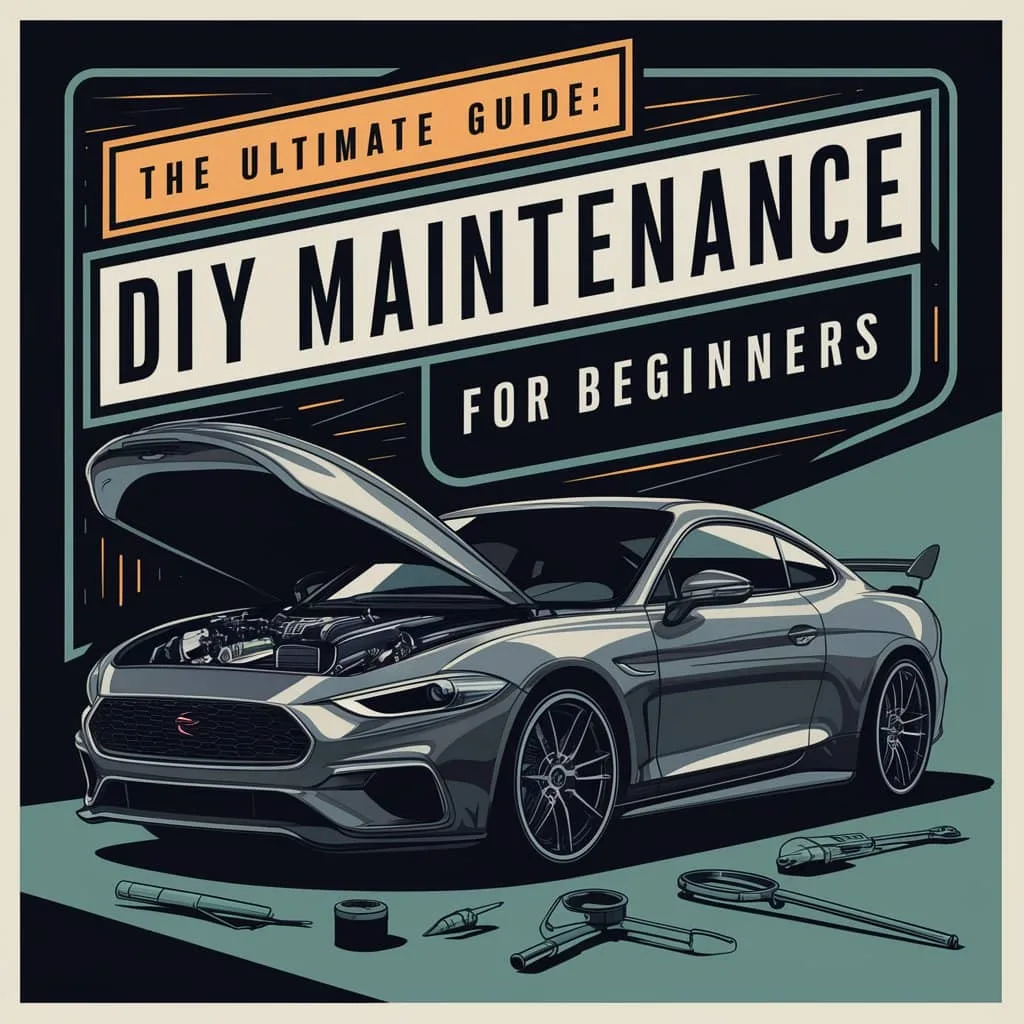
Welcome to your complete guide to DIY car maintenance! Whether you’re new or just want to brush up on your car maintenance skills, this guide will help you keep your vehicle in shape, save money and avoid unnecessary trips to the mechanic. Let’s get started!
Table of Contents
- Introduction to DIY Car Maintenance
- Essential Tools for Car Maintenance
- Basic Maintenance Tasks
- Intermediate Maintenance Tasks
- Advanced Maintenance Tips
- Regular Maintenance Schedule
- Conclusion
1. Introduction to DIY Car Maintenance
DIY car maintenance can seem daunting at first, but with the right tools and knowledge, you can easily perform many tasks yourself. Not only does this save you money, but it also gives you a better understanding of how your vehicle works.
Plus, there’s a sense of satisfaction that comes with being able to take care of your car on your own. Whether it’s changing the oil, replacing the air filter, or even changing a flat tire, being able to tackle these tasks can give you a newfound sense of independence and confidence when it comes to your vehicle.
Imagine being able to impress your friends with your newfound knowledge of car maintenance, or being able to help out a stranded stranger on the side of the road. That sense of empowerment is invaluable, and it all starts with taking the time to learn some basic car maintenance skills.
So why not give it a try? Start small, maybe with something simple like checking your tire pressure or topping up your windshield washer fluid. As you gain more experience and confidence, you can start tackling more advanced tasks. Before you know it, you’ll be a DIY car maintenance pro, saving money and feeling proud of your newfound skills.
2. Essential Tools for Car Maintenance
Before you get started, make sure you’ve got these essential tools ready at your disposal:

- Socket set: Different sizes for various bolts and nuts.
- Wrench set: A mix of open-end and box-end wrenches.
- Screwdrivers: Both flathead and Phillips.
- Jack and jack stands: For lifting your car safely.
- Oil filter wrench: Handy for removing the oil filter.
- Tire pressure gauge: To keep your tires properly inflated.
- Multimeter: For checking electrical systems.
- Pliers: Various types for different jobs.
- Funnel: To avoid spills when pouring liquids.
3. Basic Maintenance Tasks
Checking and Changing Oil
Why it’s important: Regular oil changes keep your engine running smoothly.
- Check the oil level: Use the dipstick to check oil level and condition.
- Change the oil: Drain the old oil, replace the oil filter, and add new oil.
Replacing Air Filters
Why it’s important: A clean air filter ensures proper air flow to the engine.
- Locate the air filter box: Usually near the top of the engine.
- Remove the old filter: Take out the dirty filter.
- Insert the new filter: Place the new filter in the same position.
Inspecting and Replacing Wipers
Why it’s important: Good wipers are essential for visibility during rain.
- Lift the wiper arms: Pull them away from the windshield.
- Remove the old blades: Detach the wiper blades from the arms.
- Attach new blades: Snap the new blades into place.
Checking Tire Pressure and Tread
Why it’s important: Proper tire pressure and tread ensure safe driving and fuel efficiency.
- Check tire pressure: Use a tire pressure gauge to ensure each tire is properly inflated.
- Inspect tread depth: Use a tread depth gauge or the penny test.
Battery Maintenance
Why it’s important: A well-maintained battery ensures your car starts reliably.
- Inspect battery terminals: Check for corrosion and clean if necessary.
- Check battery charge: Use a multimeter to check the battery voltage.
4. Intermediate Maintenance Tasks
Changing Spark Plugs
Why it’s important: Fresh spark plugs improve engine performance and fuel efficiency.
- Locate spark plugs: Usually found on top of the engine.
- Remove old plugs: Use a socket wrench to unscrew them.
- Install new plugs: Screw in the new plugs and tighten.
Replacing Brake Pads
Why it’s important: New brake pads ensure your car stops safely.
- Lift the car: Use a jack to lift the car and secure with jack stands.
- Remove the wheel: Take off the wheel to access the brake assembly.
- Replace the brake pads: Remove the old pads and install new ones.
Flushing and Refilling Coolant
Why it’s important: Fresh coolant keeps your engine from overheating.
- Drain old coolant: Open the radiator drain valve.
- Refill with new coolant: Pour in the recommended coolant mixture.
5. Advanced Maintenance Tips
Transmission Fluid Change
Why it’s important: Clean transmission fluid ensures smooth shifting.
- Drain old fluid: Remove the transmission pan.
- Replace the filter: Install a new transmission filter.
- Refill with new fluid: Add the specified transmission fluid.
Timing Belt Replacement
Why it’s important: A new timing belt prevents engine damage.
- Access the timing belt: Remove any necessary components.
- Align timing marks: Ensure the engine is at top dead center.
- Replace the belt: Remove the old belt and install the new one.
6. Regular Maintenance Schedule
Keep your car in top shape with this basic schedule:
- Monthly: Check tire pressure, oil level, and coolant.
- Every 3 months or 3,000 miles: Change oil and filter, inspect belts and hoses.
- Every 6 months or 6,000 miles: Rotate tires, check battery, and inspect brakes.
- Annually: Replace air filters, check suspension, and inspect exhaust system.
7. Conclusion
DIY car maintenance is a rewarding and cost-effective way to keep your vehicle running smoothly. This handy guide equips you with the knowledge to confidently handle necessary maintenance tasks. Just remember to consult your car manual for precise instructions and recommended intervals.

Write A Comment